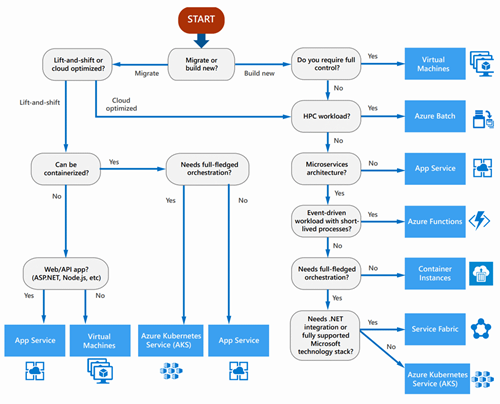With an Azure Landing Zone, you're creating a framework for your organization that enables you to efficiently perform and manage your cloud migration. Within a landing zone, you’ll select the parameters or guardrails that will be used to determine how to use your data and application in the cloud. Landing Zones are the necessary building blocks for each successful cloud adoption strategy. You can compare this with building a new house, you need to have the resources in place before the actual construction.
Landing Zone considerations
The fundamental choices you will need to make in your Landing Zone will differ for each workload and for each organization. For example, if you are going to use Azure Compute, ensure you are maximizing your efforts in automating the management and administration of these systems. It’s also interesting to note that the step for using modern PaaS services are more often than not, is a lot smaller than you might initially expect. Depending on the workload type, you can directly leverage highly scalable and efficient Azure App Services, Container Instances, or Azure Functions. The Cloud Adoption Framework contains a handy decision tree that guides you through the possible options:


If you are considering setting up a hybrid environment, you should also directly include the networking requirements as part of your first Landing Zone. The usage of Azure Virtual Networks might be a requirement and you might also need a VPN Gateway or ExpressRoute to connect both worlds. When publishing services or apps to the outside world, consider using services like Azure Front Door, Application Gateway, or Traffic Manager and make them a part of your Landing Zone.
Governance is an easy topic to ignore but, is at least as important as the technical elements of your Landing Zone. Especially when setting up your first Landing Zone, you’ll need to make decisions with regards to the usage of policies, monitoring, cost management, and identity. To remain in control, also directly include primitives such as a naming convention, subscription design, resource groups, and the usage of management groups.
As you can see, there are a lot of choices to be made. Therefore always determine the scope and purpose of your Landing Zone first.